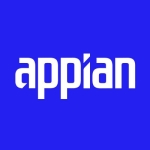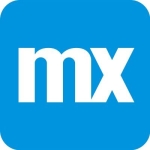What is our primary use case?
The solution is for rapid application development software.
There is a specific environment, in part a platform of PowerApps, in which you can just deploy the solutions and then you share the link with the users and they are able to open them using iPads or mobile devices, or even a computer.
We have been working to build a maintenance events app for assets, it's an app to manage and show all the assets that have been working or down for maintenance in an operation, inside one bigger mining company. They have many trucks and many other, let's say, machines in the operation and sometimes they have to put these machines just through a maintenance mode, to see what's happening, or to change some part specifically, or even if the machine is having some kind of issue. That's due to the fact that if it's down, they have to manage how long it's down and what was the part that was the issue, the cause of the issue. They have to change the parts and everything's very costly in terms of money for the company when we have one specific asset that's down.
Previously, they were using a board in a room, just to manage all these statuses. Instead of this, now we have one specific app that is working in live modes in almost real-time. Just getting the data from the services and showing it on a big board in PowerApps can show what's happened, what's the status, and what's the reason for the issue. This app allows for adding some comments. It's a collaborative app where many people can just go there and add comments and notes about what's happening with the machine.
What is most valuable?
There are many things there that I like about the solution. I like the galleries, which are really powerful. I like the way that we can build forms very quickly.
In terms of timing to develop, PowerApps is very fast. We can integrate with Power BI. You can just show the Power BI report embedded in PowerApps, and it works really nicely.
What needs improvement?
In my experience, the solution's deployment can be tricky.
In my experience, it was not good as it was giving errors around the tables and I couldn't find what was happening. I had to break it down into different solutions - one solution containing all the tables and the second solution containing the application, plus the power domain that I had for this particular application. It's something that's not good, in terms of the way that things work.
When I added Power Automate into the solution, for some reason it disappeared from my Power Automate page, as it was added inside the solution. It was very, very weird. It may be a bug.
There's a primary interface and integration feature and we build some HL processes there. However, suddenly after adding this part, and automating the solution to deploy it, it was just not available for me anymore and I had to go inside the solution and open the MS files from there instead of the usual place where all the Power Automates are created. It was like a bug and also. In terms of the issues that I have with the solution feature inside PowerApps, I didn't like it. I've seen this too complicated. It's something that Microsoft has to improve.
The speed and performance could be better. PowerApps sometimes gets stuck, gets slow and I don't have any reason for why it's happening. Suddenly you are trying to see the rows on your screen and you just have a wait to get the results back, then there's nothing happening. These things look like an environmental issue, however, I don't know if it's something about the localization or something else.
We'd like our option in terms of licensing that can be paid by the app and not by users. That could be something good. Just the way that they charge the license, it's too much. There are not many options. They could give a little bit more flexibility to choose in terms of options for a license.
For how long have I used the solution?
I've used the solution for six months.
What do I think about the stability of the solution?
It's stable, however, sometimes it is slow.
There are no issues about the connection falling. Just, when you are using it, suddenly the page is broken. There is no issue yet, sometimes it gets a little bit frozen and you're waiting a little bit more time to gather results. The table is not a big table with many, many rows, so why is it taking so long, so much time to get the answer back from the app? That's the main issue. There's a performance problem. It's not a stability question.
What do I think about the scalability of the solution?
It's scalable if we're talking about the database, about data warehouse, however, not about PowerApps. PowerApps is not scalable. It's scalable, in the sense that the app you can share for many users, however, you have to pay by user. Scalability isn't really applicable.
We're still not running it fully. We're just prepared to start testing.
How are customer service and support?
We've dealt with technical support in the past.
We had some little situations where we couldn't get the help as we needed, however, that was a limitation in the tool - it was not an issue with them.
For the most part, they are really good.
How would you rate customer service and support?
How was the initial setup?
IN terms of the initial setup, we have to choose which kind of approach we are going to use in PowerApps, as PowerApps has different strings. You can choose PowerApps Canvas, or you can choose a driving app, and that's a little bit different. In my case, I chose a PowerApps combo as I needed a little bit more in terms of flexibility and in terms of how I build this topic they screen.
In terms of the development, it's quick, really it's quick, however, it's not the fastest way to develop and there are some other solutions in the market that are faster in some ways. In terms of deployment, in my experience, when you're going to deploy perhaps an application, you have to build a solution and a solution and it's a little bit tricky. You have to add all the components to the solution and, after that, you have to export the solution and import the solution into the production environment. We have an environment for development and a second environment for production.
The application is deployed, however, it's not in use yet. They are just preparing to start testing the application and once they finalize the test, the app is going to go live.
After I passed over all these little issues that I had, it was quick to deploy. It was just a question of minutes. When we export the solution and import the solution back, it's easy. However, all the processes to be able to finally get over these issues and everything, it took me four weeks just to realize what was going on and handle it.
What about the implementation team?
I was the one that deployed the solution.
What was our ROI?
In terms of ROI, I didn't see any. However, if you look at the cost of building an app, the coding costs would be much higher without this solution. You can save months of development time and the money needed to deploy the solution. In that sense, the ROI is awesome.
What's my experience with pricing, setup cost, and licensing?
The licensing is restrictive and can get expensive as you have to pay per user, not per app. It's a range of users. For example, if you go above 50 users, you need to pay more.
If you compare it with competitors like Google, they are more expensive than Google. Google has another option that's a PowerApps competitor called AppSheets and AppSheets is cheaper than PowerApps.
What other advice do I have?
We are Microsoft partners.
I'm using the latest version of the solution.
I'd rate the solution eight out of ten.
There are some things that need improvement in some ways to make the tool better. However, it's very powerful and it's very fast to deploy something. It's great.
Which deployment model are you using for this solution?
Public Cloud
If public cloud, private cloud, or hybrid cloud, which cloud provider do you use?
Other
Disclosure: My company does not have a business relationship with this vendor other than being a customer.




















